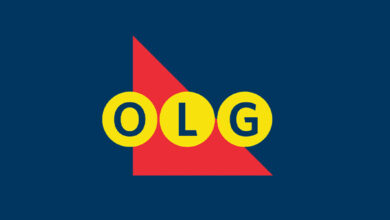How to Make a Mid-Career Transition to Product Management

Maybe you watched a “day in the life” TikTok. Perhaps your interest was piqued after reading a few articles detailing the most in-demand jobs in tech. You might also just like building things and want to make that your day job. Whatever the reason, you’ve found yourself contemplating a career change and moving into product management.
Now what?
Jaclyn Spitz joined healthtech company Strata as an optimization consultant, a client-facing role that saw her working directly with clients to ensure success with the company’s platform post-implementation. She immersed herself in Strata’s product as well as gathering and surfacing customer feedback to the product management and development teams. Over time, she found herself gravitating toward problem solving and building –– and began considering a career change.
“Working every day with knowledgeable clients gave me an opportunity to learn their problems and think about how the product could be changed to get them a solution,” Spitz said. “As the vision of my future became clear, I shared my desired career path with my manager so that when a product position opened up, everyone knew my intentions.”
Spitz pivoted to product management nearly five years ago and is currently a senior PM at Strata. Successfully transitioning to a new career involved much more than simply expressing her interest in a new role to her manager, and once she’d made the leap, finding success required her to cultivate new skills. Spitz shared her story with Built In Chicago, which is required reading for anyone considering a similar pivot.
Strata is a healthtech company offering solutions for financial planning and analytics as well as a data-sharing feature that enables hospitals to compare their financial and operational performance against one another.
Tell us about how you pivoted into product management.
I started as a client-facing support consultant before pivoting to product management within the company. In my role I had a list of organizations that finished our implementation of the software and needed assistance as they grew accustomed to it. Every day I would receive requests to troubleshoot issues, build something out of the product or discuss new features. The goal of my role was to make sure the client got the full value out of the product and kept using it consistently after implementation. Working every day with knowledgeable clients gave me an opportunity to learn their problems and think about how the product could be changed to get them a solution.
My role’s responsibilities as well as my general strengths and interests pulled me toward working with developers and product managers. My favorite part of my job was understanding how the product worked, and I dedicated time to learning about it. If there was an internal initiative for consultants to test our products, I made sure to always volunteer. As the vision of my future became clear, I shared my desired career path with my manager so that when a product position opened up, everyone knew my intentions.
How did you effectively leverage your past experience when pivoting into product management?
My past experience was my greatest asset as well as my biggest weakness. I was an expert on how the product worked and how clients were utilizing it, but I was less comfortable envisioning a new product. My strengths were best utilized working with the development team because I was able to explain the client experience thoroughly. I could tell them a user’s entire daily workflow as well as what the user wished the product could do. The way a product is used can truly change how a page should look and I was able to give quick and accurate feedback. I had heard suggestions, ideas, preferences and complaints from clients about the product, and I was ready to use that insight immediately.
Finding your vision takes time, but knowing what questions to ask can guide you in the right direction.”
When it came to my weaknesses, I had to really depend on market research and our clients. My previous role taught me how to build relationships, and by the time I switched to product management I had an extensive list of clients I was close with. I depended on the rapport I had built with them until I felt comfortable branching out to clients I had never spoken with. Having those relationships made for a smoother transition.
Looking back, what was the biggest challenge when pivoting to a career in product management? How would you recommend others navigate a similar challenge?
The biggest challenge was finding my voice and becoming assertive. A client-facing role is always about pleasing people, and most of my job was listening to what the client wanted and delivering exactly that as fast as possible. When I moved over to product management, I had to start asking myself two questions: “Is this product request beneficial to the product as a whole,” and, “Is the proposed solution the best solution for their problem?” Those two questions were not only for clients but also consultants, engineers and even other product managers. And after I asked those questions, I was the final judge.
I had to find North on my product vision compass. And once I did that, I had to make sure I communicated my decisions clearly to keep those relationships strong. Most clients and team members understand my product decisions if I remain transparent and explain my reasoning. But I also had to get comfortable with causing conflict when people didn’t understand my reasoning. Finding your vision takes time, but knowing what questions to ask and listening to your team’s feedback can guide you in the right direction.



